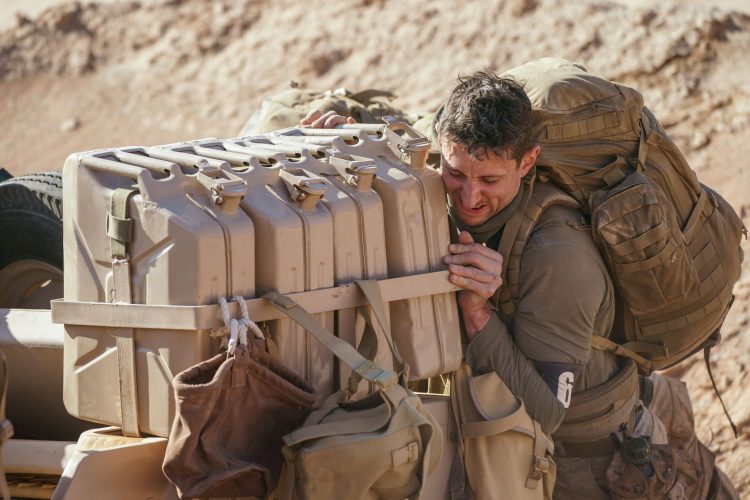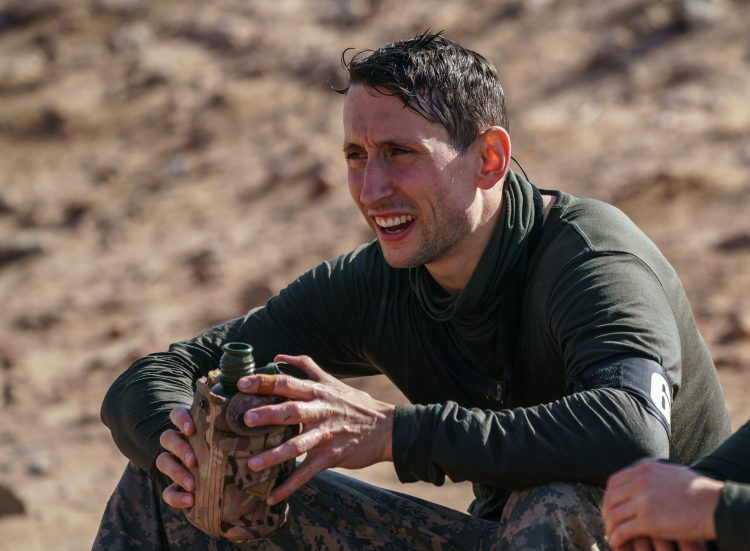Products You May Like
Jonathan Broom-Edwards is a Paralympic gold-medal-winning high jumper and star of the latest series of Celebrity SAS: Who Dares Wins…
To discover how tough it was, MF grabbed some time with Jonathan on his return from filming in the Middle East, and ahead of what looks to be a packed athletics schedule in the run-up to Paris 2024.
We started by asking him how he prepared for the brutality of Special Forces training.
Brutal is exactly the right term. The challenge began before I even got to filming.
I got a late call to take part and had about four weeks to train for it. I needed to go from being an athlete who only trains for jumping power at the end of a short sprint to building endurance and stamina in no time at all. That’s tough when you’ve never run more than three miles in your life.
I asked a personal trainer pal to put me through the kinds of ‘beastings’ that feature in the show.
For those few weeks I went through hell doing runs, cold-water immersions, sleep deprivation and HIIT workouts at the end of hill runs.
Related: Are you fit enough to complete this SAS-inspired workout?
I slept in a gym with my alarm going off at different times to simulate sleep deprivation.
I’d get up and start working out. It was insane and intense. When I trained with my headphones on it was just tortuous noise – babies crying and people screaming.
As the alarm went off, I’d get into my gear and start doing SkiErg stuff or press-ups or squats and then back to sleep again. Then in the morning I was joining group classes or doing more HIIT sessions.

Broom-Edwards pushing a military vehicle during a gruelling task on Celebrity SAS: Who Dares Wins
In one of the tasks on Celebrity SAS: Who Dares Wins – a long car push – my team managed to close the gap on the others but I was in so much pain.
My legs, chest, arms – even my head was screaming at me to quit. But in that moment my pain vanished. I’ve never experienced that before. I felt about 50 times stronger with this primal roar pushing me on.
Related: How to be a ‘tactical athlete’ and get fit for life
Realising there’s more I can get from my mind was empowering.
There’s a saying I like, which is that you ‘don’t know how strong you are until strong is all you’ve got left’. You’re put into a hole and you’ve got nothing left and you still have to find more.
The show taught me that I can endure a whole lot more than I ever thought. It taught me that the mind will give up first – but that you can actually go beyond that. It’s been hugely transformative.
The gassing was horrendous. It’s the first time in my life I’ve felt sheer panic because it just consumes everything.
You can’t breathe. You can’t speak. My brain stopped working. I was asked simple questions like how old I was and I couldn’t answer. It went on for a lot longer than the TV shows you, and I got to a point where I was thinking, ‘Oh my god, I’m literally going to die.’ It’s also the ugliest I’ve ever looked in my life!
With my discipline, the high jump, you’ve got to have the legs of a horse and the chest of a ballerina.
Basically you’ve got to be skinny and light, so I never really needed upper-body strength. But in the build-up to the show, I was having to eat more and build stamina doing press-ups, pull-ups and weights. I went from 79kg up to 86kg mainly due to muscle development. In the first week, however, I went down to 80kg because you have just 600 calories a day. But I’m definitely more toned as a result of it all.

Jonathan after the helo-casting task, where contestants had to jump into the sea from the rear of a helicopter
I hope my new physique will stand me in good stead for a very busy two years ahead.
Because of Covid we have three major competitions – European Championships, Worlds and the Paralympics – crammed into two years.
For these I’ll do two technical (jumping) sessions a week, two gym sessions for strength and conditioning, two running sessions and one or two more rhythmical sessions for high jump finessing. I also do plyometric sessions and ancillary work on core stability, which is a big thing for high jump.
During Celebrity SAS: Who Dares Wins I did find that all the running that I was doing in the desert in boots meant my legs felt fantastic by the end. So, I’ve integrated some of the longer runs into my normal routine.
During this winter training block I can eat a bit more to sustain volume, but when it gets to competition time I have to taper.
Obviously, protein is a big driver for recovery. I mix it up with pasta and rice a lot, though I actually feel better in terms of my energy levels by going more vegetarian during the day.
Between big training blocks I prefer to go pescatarian (eating only fish instead of meat) because it doesn’t sit on me as much. But after the big sessions I eat more meat to encourage more protein recovery.
It’ll be my high jump swansong in Paris. I’ll be 36 and I want to transition into more endurance work like an Ironman.
Those beastings have left their mark! I’m doing lots of Wim Hof cold water immersions and lake swims. I must be a glutton for punishment!
Despite hitting a personal best of 2.15m, taking Gold and Silver at the Olympics and holding four world and two European high jump medals, the current World Champion has described the Celebrity SAS: Who Dares Wins trial filmed in Jordan as “the hardest thing I’ve ever done”.
Jonathan was born with Talipes Equinovarus (more commonly known as clubbed foot) and competes in the Men’s T44 classification – only realising that he was eligible after watching the London Paralympics in 2012.